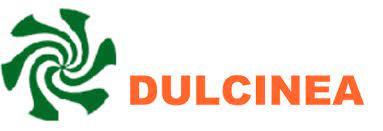Arquitecturas de Interacción para Fortalecer la Pertenencia
Trabajadores Híbridos en Agencias de Marketing Digital
DOI:
https://doi.org/10.62161/revvisual.v17.5859Palabras clave:
Agencias de marketing digital, Marketing interno, Arquitecturas de interacción, Sentido de pertenencia, Trabajadores híbridosResumen
Este artículo analiza cómo las arquitecturas de interacción influyen en el sentido de pertenencia y compromiso de los trabajadores híbridos en agencias de marketing digital en España. Mediante entrevistas en profundidad con directivos y de una revisión de la literatura sobre marketing interno y pertenencia, se identificó que las herramientas más empleadas cumplen principalmente una función informativa. Entre ellas destacan plataformas como Discord y Slack, newsletters, celebraciones, formaciones y reuniones, todas orientadas a fortalecer la conexión emocional que caracteriza al marketing interno. Los resultados muestran que estas prácticas contribuyen a reforzar los vínculos culturales y emocionales en entornos híbridos. Sin embargo, las empresas enfrentan retos clave para consolidar el sentido de pertenencia, entre los que se encuentran las barreras tecnológicas y la dificultad de integrar la cultura organizacional en el entorno digital. El estudio ofrece pautas para diseñar estrategias efectivas que fortalezcan la cohesión interna en la era digital.
Descargas
Estadísticas globales ℹ️
|
367
Visualizaciones
|
109
Descargas
|
|
476
Total
|
|
Citas
Afota, M. C., Provost Savard, Y., Léon, E., & Ollier‐Malaterre, A. (2024). Changes in belongingness, meaningful work, and emotional exhaustion among new high‐intensity telecommuters: Insights from pandemic remote workers. Journal of occupational and organizational psychology. https://doi.org/10.1111/joop.12494 DOI: https://doi.org/10.1111/joop.12494
Appel-Meulenbroek, R., Kemperman, A., van de Water, A., Weijs-Perrée, M., & Verhaegh, J. (2022). How to attract employees back to the office? A stated choice study on hybrid working preferences. Journal of Environmental Psychology, 81, 101784. https://doi.org/10.1016/j.jenvp.2022.101784 DOI: https://doi.org/10.1016/j.jenvp.2022.101784
Araque-Jaimes, D. L., Sánchez-Estepa, J. M., & Uribe, A. F. (2017). Relación entre marketing interno y compromiso organizacional en Centros de Desarrollo Tecnológico colombianos. Estudios gerenciales, 33(142), 95-101. https://doi.org/10.1016/j.estger.2016.12.005 DOI: https://doi.org/10.1016/j.estger.2016.12.005
Arasanmi, C. N., & Krishna, A. (2019). Employer branding: perceived organisational support and employee retention—the mediating role of organisational commitment. Industrial and Commercial Training, 51(3), 174-183. https://doi.org/10.1108/ICT-10-2018-0086 DOI: https://doi.org/10.1108/ICT-10-2018-0086
Barnes, K., Vione, K., & Kotera, Y. (2024). Effective leadership practice among senior leaders working from home and in the hybrid workplace across COVID-19. Business & Economics, 4(5), 55. https://doi.org/10.1007/s43546-024-00651-4 DOI: https://doi.org/10.1007/s43546-024-00651-4
Beno, M. (2022). Differences between managing face-to-display workers and in-house workers (hybrid work model): A qualitative study from Austria. Academic Journal of Interdisciplinary Studies, 11. https://doi.org/10.36941/ajis-2022-0033 DOI: https://doi.org/10.36941/ajis-2022-0033
Bombín Marrodán, A., & LLovet Rodríguez, C. (2024). Comunicación interna en el teletrabajo de agencias de marketing digital. European Public & Social Innovation Review, 9, 1–19. https://doi.org/10.31637/epsir-2024-1141 DOI: https://doi.org/10.31637/epsir-2024-1141
Branch (18 de octubre de 2024). Estadísticas de trabajo híbrido que debes conocer. https://branch.com.co/marketing-digital/estadisticas-de-trabajo-hibrido-claves-que-debes-conocer/
Budhiraja, S., & Yadav, S. (2020). Employer branding and employee-emotional bonding—The CSR way to sustainable HRM. Sustainable Human Resource Management: Transforming Organizations, Societies and Environment, 133-149. https://doi.org/10.1007/978-981-15-5656-2_8 DOI: https://doi.org/10.1007/978-981-15-5656-2_8
Buła, P., Thompson, A., & Żak, A. A. (2024). Nurturing teamwork and team dynamics in a hybrid work model. Central European Management Journal. https://doi.org/10.1108/CEMJ-12-2022-0277 DOI: https://doi.org/10.1108/CEMJ-12-2022-0277
Byrd, M. Y. (2022). Creating a culture of inclusion and belongingness in remote work environments that sustains meaningful work. Human Resource Development International, 25(2), 145-162. https://doi.org/10.1080/13678868.2022.2047252 DOI: https://doi.org/10.1080/13678868.2022.2047252
Cardona Arbelaez, D. & González, Z. R. (2017). Marketing interno como estrategia para el desarrollo del talento humano: una perspectiva del cliente interno. Aglala, 8(1), 183-192. https://revistas.uninunez.edu.co/index.php/aglala/article/view/1031
Chen, X., Liu, F., Chen, X., & Zeng, J. (2024). Work-Life Balance Experiences of Business Process Outsourcing Employees in a Remote Work-Set Up. Journal of Business and Management Studies, 6(1), 55-96. https://doi.org/10.32996/jbms.2024.6.1.4 DOI: https://doi.org/10.32996/jbms.2024.6.1.4
Choudhury, P., Khanna, T., Makridis, C. A. & Schirmann, K. (2024). Is hybrid work the best of both worlds? Evidence from a field experiment. Review of Economics and Statistics, 1-24. https://doi.org/10.1162/rest_a_01428 DOI: https://doi.org/10.1162/rest_a_01428
Crespo, J. L., Fondevila-Gascón, J. F., & Marqués-Pascual, J. (2022). Employer branding y propuesta de valor al empleado en códigos éticos: estudio de caso. Innovar, 32(83), 51-62. https://doi.org/10.15446/innovar.v32n83.99886 DOI: https://doi.org/10.15446/innovar.v32n83.99886
Cui, T., Wang, Y., & Namih, B. (2019). Build an Intelligent Online Marketing System: An Overview. IEEE Internet Computing, 23(4), 53–60. https://doi.org/10.1109/MIC.2019.2924637 DOI: https://doi.org/10.1109/MIC.2019.2924637
Dalessandro, C., & Lovell, A. (2024). The Pandemic-Stratified Workplace: Workspace, Employee Sense of Belonging, and Inequalities at Work. SAGE Open, 14(1), 21582440241228909. https://doi.org/10.1177/21582440241228909 DOI: https://doi.org/10.1177/21582440241228909
Davis, J. A. (2024). Internal branding for equity: Creating a sense of belonging in public sector organizations. En N.M. Elias, M.H. Holmes, M.J. D’ Agostino (Eds) Making Sense of Identity and Equity in Public Sector Workplaces (pp. 156-170). Routledge. DOI: https://doi.org/10.4324/9781003530152-12
Drayton, M. (2024). Leading Hybrid Organisations. How to Build a Group Identity in the Hybrid Organisation. Routledge. DOI: https://doi.org/10.4324/9781003387602
Dulfer, N., Gowing, A., & Mitchell, J. (2024). Building belonging in online classrooms: relationships at the core. Teaching in Higher Education. https://doi.org/10.1080/13562517.2024.2349993 DOI: https://doi.org/10.1080/13562517.2024.2349993
Durakovic, I., & Aznavoorian, L. (2024). Sense of belonging and professional identity. En C. Candino, I. Durakovic, S. Marzban (Eds) Routledge Handbook of High-Performance Workplaces (pp. 186-201). Routledge. DOI: https://doi.org/10.1201/9781003328728-19
Ding, Y., Jin, Z., Ma, M. S., Xing, B. B., & Yang, Y. J. (december, 18, 2024). Return to Office Mandates and Brain Drain. https://cdn.arstechnica.net/wp-content/uploads/2024/12/5031481.pdf DOI: https://doi.org/10.2139/ssrn.5031481
Eng, I., Tjernberg, M., & Champoux-Larsson, M. F. (2024). Hybrid workers describe aspects that promote effectiveness, work engagement, work-life balance, and health. Cogent Psychology, 11(1), 2362535. https://doi.org/10.1080/23311908.2024.2362535 DOI: https://doi.org/10.1080/23311908.2024.2362535
Eriksson, T., Näppä, A., & Robertson, J. (2022). All for one and one for all: Encouraging ecosystem citizenship behaviour to strengthen employer branding. Scandinavian Journal of Management, 38(2), 101211. https://doi.org/10.1016/j.scaman.2022.101211 DOI: https://doi.org/10.1016/j.scaman.2022.101211
Fayard, A. L., Weeks, J., & Khan, M. (2021). Designing the hybrid office. Harvard Business Review, 99(2), 114-123. https://hbr.org/2021/03/designing-the-hybrid-office
Félix Mateus, A. . (2022). The Management of Internal Communication for the Wellbeing in Working Place. VISUAL REVIEW. International Visual Culture Review Revista Internacional De Cultura Visual, 10(4), 1–18. https://doi.org/10.37467/revvisual.v9.4328 DOI: https://doi.org/10.37467/revvisual.v9.4328
Gohoungodji, P., N’Dri, A. B., & Matos, A. L. B. (2023). What makes telework work? Evidence of success factors across two decades of empirical research: A systematic and critical review. The International Journal of Human Resource Management, 34(3), 605-649. https://doi.org/10.1080/09585192.2022.2112259 DOI: https://doi.org/10.1080/09585192.2022.2112259
Gibbs, M., Mengel, F. & Siemroth, C. (2024). Employee innovation during office work, work from home and hybrid work. Sci Rep 14, 17117 https://doi.org/10.1038/s41598-024-67122-6 DOI: https://doi.org/10.1038/s41598-024-67122-6
Gratton, L. (2021). How to do hybrid right. Harvard Business Review, 99(3), 65-74. https://hbr.org/2021/05/how-to-do-hybrid-right
Grzegorczyk, M., Mariniello, M., Nurski, L., & Schraepen, T. (2021). Blending the physical and virtual: a hybrid model for the future of work (No. 14/2021). Bruegel Policy Contribution.
Hafermalz, E., & Riemer, K. (2021). Productive and connected while working from home: what client-facing remote workers can learn from telenurses about ‘belonging through technology’. European Journal of Information Systems, 30(1), 89-99. https://doi.org/10.1080/0960085X.2020.1841572 DOI: https://doi.org/10.1080/0960085X.2020.1841572
Hassanpour, B. (2023). Transformational contribution of technology to studio culture: experience of an online first-year architecture design studio during the COVID-19 pandemic. Archnet-IJAR: International Journal of Architectural Research, 17(2), 393–408. https://doi.org/10.1108/ARCH-12-2021-0328 DOI: https://doi.org/10.1108/ARCH-12-2021-0328
Hernández Sampieri, R., Fernández collado, C. & Baptista, P. (2006). Fundamentos de metodología de la investigación. MC Graw Hill.
Jacukowicz, A., & Merecz-Kot, D. (2020). Work-related internet use as a threat to work-life balance-a comparison between the emerging on-line professions and traditional office work. International Journal of Occupational Medicine and Environmental Health, 33(1). https://doi.org/10.13075/ijomeh.1896.01494 DOI: https://doi.org/10.13075/ijomeh.1896.01494
Jia, X., Zhao, X., Tao, W., & Ahn, S. (2024). From Exclusion to Connection: The Role of Anthropomorphic Chatbots in Shaping Customer Responses Post-Social Exclusion. Journal of Internet Commerce, 23(3), 205–232. https://doi.org/10.1080/15332861.2024.2375965 DOI: https://doi.org/10.1080/15332861.2024.2375965
Jin, Y., Zhu, Y., Chen, Y. & Lin, Y. (2024). Identifying Optimal Rest Spaces for Food Takeaway Workers using Digital Marketing Insights Based on ArcGIS– A Case Study in Xujiahui Street, Shanghai. Computer-Aided Design and Applications, 21(S4), 135–149. https://cad-journal.net/files/vol_21/CAD_21(S4)_2024_135-149.pdf DOI: https://doi.org/10.14733/cadaps.2024.S4.135-149
Kim, J., & Fay, D. L. (2024). A Taste of Telework: Effects of Remote Work Arrangements During and After the Global Pandemic. Public Personnel Management, 00910260241271322. https://doi.org/10.1177/00910260241271322 DOI: https://doi.org/10.1177/00910260241271322
Kanellopoulou, C. (2019). Space in common: Socially engaged art in the Athens of crisis. Journal of Greek Media and Culture, 5(2), 211–230. https://doi.org/10.1386/JGMC.5.2.211_1 DOI: https://doi.org/10.1386/jgmc.5.2.211_1
Lin, H., Ouyang, H., Fang, X., Wang, J., Yuan, B., & Yang, W. (2020). Architecture design and key technologies study of Omnichannel business platform for electric power marketing. Journal of Physics: Conference Series, 1646(1). https://doi.org/10.1088/1742-6596/1646/1/012087 DOI: https://doi.org/10.1088/1742-6596/1646/1/012087
Marinov, M. A. (Ed.). (2023). Virtual Teams Across National Borders. Routledge. DOI: https://doi.org/10.4324/9781003398745
Maj, A. M. (2024). Communicate to engage: storytelling, content creation, and promoting the idea of sustainability and intercultural dialogue in travel videoblogs. Creativity Studies, 17(1), 1-13. https://doi.org/10.3846/cs.2024.18329 DOI: https://doi.org/10.3846/cs.2024.18329
Mishra, T. (2024). Remote Work, Internal Marketing and Human Resource Management: Innovative Approaches and Fundamentals. Taylor & Francis. DOI: https://doi.org/10.4324/9781003490647
Nemteanu, M. S., & Dabija, D. C. (2021). The influence of internal marketing and job satisfaction on task performance and counterproductive work behavior in an emerging market during the COVID-19 pandemic. International Journal of Environmental Research and Public Health, 18(7), 3670. https://doi.org/10.3390/ijerph18073670 DOI: https://doi.org/10.3390/ijerph18073670
Nikolaiets, K., Umantsiv, Y., Shtunder, I., Ozhelevskaya, T., & Shcherbakova, T. (2023). Virtual labor migration: current trends and development prospects. Financial & Credit Activity: Problems of Theory & Practice, 4(52). https://doi.org/10.55643/fcaptp.5.52.2023.4175 DOI: https://doi.org/10.55643/fcaptp.5.52.2023.4175
Nohutlu, Z. D., Englis, B. G., Groen, A. J., & Constantinides, E. (2022). Customer cocreation experience in online communities: antecedents and outcomes. European Journal of Innovation Management, 25(2), 630–659. https://doi.org/10.1108/EJIM-08-2020-0313 DOI: https://doi.org/10.1108/EJIM-08-2020-0313
Nohutlu, Z. D., Englis, B. G., Groen, A. J., & Constantinides, E. (2023). Innovating With the Customer: Co-Creation Motives in Online Communities. International Journal of Electronic Commerce, 27(4), 523–557. https://doi.org/10.1080/10864415.2023.2255111 DOI: https://doi.org/10.1080/10864415.2023.2255111
Özel, N. G., & Altunışık, R. (2024). Belongingness and Consumer Well-Being. En F. Sonmez (Ed) Fostering Consumer Well-Being: Theory, Evidence, and Policy (pp. 217-231). Springer Nature Switzerland. https://doi.org/10.1007/978-3-031-59144-0_12 DOI: https://doi.org/10.1007/978-3-031-59144-0_12
Pronk, N. P. (2024). Social Connections, Belonging, and Remote Work. ACSM's Health & Fitness Journal, 28(1), 43-45. https://doi.org/10.1249/FIT.0000000000000929 DOI: https://doi.org/10.1249/FIT.0000000000000929
Puro Marketing (31 de octubre de 2024). El empleo y trabajo remoto en el sector del marketing digital. https://www.puromarketing.com/14/214554/empleo-trabajo-remoto-sector-marketing-digital
Raman, S. (2014). Sense of belonging. En A.C. Michalos (Ed) Encyclopedia of quality of life and well-being research (pp. 6308-6310). Springer International Publishing. DOI: https://doi.org/10.1007/978-3-031-17299-1_2646
Reis, I., Sousa, M. J., & Dionísio, A. (2021). Employer branding as a talent management tool: A systematic literature revision. Sustainability, 13(19), 10698. https://doi.org/10.3390/su131910698 DOI: https://doi.org/10.3390/su131910698
Rupčić, N. (2024). Working and learning in a hybrid workplace: challenges and opportunities. The Learning Organization, 31(2), 276-283. https://doi.org/10.1108/TLO-02-2024-303 DOI: https://doi.org/10.1108/TLO-02-2024-303
Saikia, S. B., & Chakrabarti, D. (2019). Experiential design intervention to motivate tourist local interaction and connect with unexplored landscape—a case study of North Guwahati. In Smart Innovation, Systems and Technologies (Vol. 134). https://doi.org/10.1007/978-981-13-5974-3_66 DOI: https://doi.org/10.1007/978-981-13-5974-3_66
Salazar-Palomino, S., Huamán Romaní, Y. L., Szczcpansky-Grobas, D., & Alarcón-Sucasaca, A. (2024). Application of Audiovisual Resources in University Students in Rural Areas. VISUAL REVIEW. International Visual Culture Review Revista Internacional De Cultura Visual, 16(2), 137–151. https://doi.org/10.62161/revvisual.v16.5251 DOI: https://doi.org/10.62161/revvisual.v16.5251
Scheide Miller, C., & Giblin, J. (2024). Improving job satisfaction and belonging through flexible work and leadership cohorts. Advances in Developing Human Resources, 26(1), 20-47. https://doi.org/10.1177/15234223231212675 DOI: https://doi.org/10.1177/15234223231212675
Silva-Giraldo, C. A., Rueda-Mahecha, Y. M., & Moreno-Suárez, A. M. (2023). Collaborative networking and the use of ICT in new organizational communications. VISUAL REVIEW. International Visual Culture Review Revista Internacional De Cultura Visual, 14(2), 1–13. https://doi.org/10.37467/revvisual.v10.4603 DOI: https://doi.org/10.37467/revvisual.v10.4603
Silva Ortega, V. P, Giler Valverde, G. P.., & González Soriano, F. J.. (2019). E-marketing en los entornos digitales aplicados a la administración. RECIMUNDO, 3(3), 1155-1176. https://doi.org/10.26820/recimundo/3.(3).septiembre.2019.1155-1176 DOI: https://doi.org/10.26820/recimundo/3.(3).septiembre.2019.1155-1176
Smith, S. A., Patmos, A., & Pitts, M. J. (2018). Communication and teleworking: A study of communication channel satisfaction, personality, and job satisfaction for teleworking employees. International Journal of Business Communication, 55(1), 44-68. https://doi.org/10.1177/2329488415589101 DOI: https://doi.org/10.1177/2329488415589101
Staniec, I., & Kalińska-Kula, M. (2021). Internal employer branding as a way to improve employee engagement. Problems and Perspectives in Management, 19(3), 33. http://dx.doi.org/10.21511/ppm.19(3).2021.04 DOI: https://doi.org/10.21511/ppm.19(3).2021.04
Suh, T., Kang, S., & Kemp, E. A. (2020). A Bayesian network approach to juxtapose brand engagement and behaviors of substantive interest in e-services. Electronic Commerce Research, 20(2), 361–379. https://doi.org/10.1007/s10660-018-9320-0 DOI: https://doi.org/10.1007/s10660-018-9320-0
Sun, M., Kraus, T., Pauli, R., & Garus, C. (2025). Changing Sense of Place in Hybrid Work Environments: A Systematic Review of Place Identity and Employee Well-being. Wellbeing, Space and Society, 100236. https://doi.org/10.1016/j.wss.2025.100236 DOI: https://doi.org/10.1016/j.wss.2025.100236
Tranová, K. L., & Veneti, A. (2024). The Use of Podcasting in Political Marketing: The Case of the Czech Republic. Journal of Political Marketing, 23(4), 305–322. https://doi.org/10.1080/15377857.2021.2024479 DOI: https://doi.org/10.1080/15377857.2021.2024479
Trinkenreich, B., Gerosa, M. A., & Steinmacher, I. (2024). Unraveling the drivers of sense of belonging in software delivery teams: Insights from a large-scale survey. Proceedings of the IEEE/ACM 46th International Conference on Software Engineering (pp. 1-12). https://doi.org/10.1145/3597503.3639119 DOI: https://doi.org/10.1145/3597503.3639119
Wahl, I., Wolfgruber, D. & Einwiller, S. (2024). Mitigating teleworkers' perceived technological complexity and work strains through supportive team communication. Corporate Communications: An International Journal, 29(3), 329-345. https://doi.org/10.1108/CCIJ-05-2023-0061 DOI: https://doi.org/10.1108/CCIJ-05-2023-0061
Waller, G. (2022). ¿Crees que el trabajo híbrido no funciona? Los datos no avalan esa opinión. Gardner. https://www.gartner.es/es/articulos/crees-que-el-trabajo-hibrido-no-funciona-los-datos-no-avalan-esa-opinion
Williamson, S., Taylor, H., Lundy, J. & Jogulu, U. (2024). Hybrid Working: From ‘the new normal’ to ‘business as usual’. Report Launch: Hybrid working: From ‘the new normal’ to ‘business as usual’ webinar.
Yacine, L. & Karjaluoto, H. (2022). Hybrid work: Gen Z expectations and internal employer branding implications. En P. Madan, S. Tripathi, F. Khalique, G. Puri (Eds) Re-envisioning organizations through transformational change (pp. 21-50). Productivity Press. https://doi.org/10.4324/9781003267751-3 DOI: https://doi.org/10.4324/9781003267751-3
Yang, Y. K. & Lin, W. S. (2023). How to enhance workplace climate through telework communication approaches in organization during the era of changes? Evidences of authentic leaders. Asia pacific management review, 28(2), 110-119. https://doi.org/10.1016/j.apmrv.2022.07.002 DOI: https://doi.org/10.1016/j.apmrv.2022.07.002
Descargas
Publicado
Cómo citar
Número
Sección
Licencia
Derechos de autor 2025 Los autores/as conservan los derechos de autor y ceden a la revista el derecho de la primera publicación y el derecho de edición

Esta obra está bajo una licencia internacional Creative Commons Atribución-SinDerivadas 4.0.
Los autores/as que publiquen en esta revista aceptan las siguientes condiciones:
- Los autores/as conservan los derechos de autor.
- Los autores/as ceden a la revista el derecho de la primera publicación. La revista también posee los derechos de edición.
- Todos los contenidos publicados se regulan mediante una Licencia Atribución/Reconocimiento-SinDerivados 4.0 Internacional. Acceda a la versión informativa y texto legal de la licencia. En virtud de ello, se permite a terceros utilizar lo publicado siempre que mencionen la autoría del trabajo y a la primera publicación en esta revista. Si transforma el material, no podrá distribuir el trabajo modificado.
- Los autores/as pueden realizar otros acuerdos contractuales independientes y adicionales para la distribución no exclusiva de la versión del artículo publicado en esta revista (p. ej., incluirlo en un repositorio institucional o publicarlo en un libro) siempre que indiquen claramente que el trabajo se publicó por primera vez en esta revista.
- Se permite y recomienda a los autores/as a publicar su trabajo en Internet (por ejemplo en páginas institucionales o personales), una vez publicado en la revista y citando a la misma ya que puede conducir a intercambios productivos y a una mayor y más rápida difusión del trabajo publicado (vea The Effect of Open Access).













